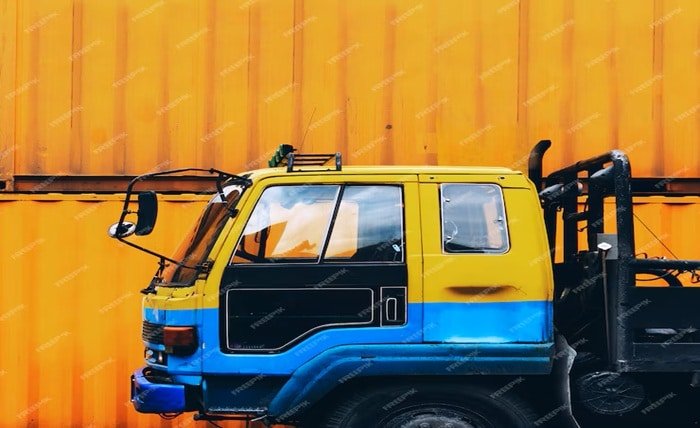8 Essential Emergency Things for Evey Truck Owners

Even with predictive maintenance systems, many unknowns can cause trucks to break down unexpectedly, such as natural calamities, component failure, or human errors. This is where the importance of all-inclusive fleet management strategies becomes clear.
However, all truck drivers must carry a standard emergency kit for their health and comfort, especially when travelling long distances.
But what should this kit include? Keep scrolling for a detailed guide!
Comprehensive List of Essential Items to Carry in a Truck
When travelling long distances, truck drivers can face several types of emergencies. They may range from road blockages, accidents, vehicular breakdowns, etc. In all these scenarios, the more resources drivers have in their emergency kit, the better.
But keeping the limited space in mind, here are eight essential items to get them started:
1. Water and Food
If truck drivers face a halt in one place for days, they must stock enough drinking water. A normal human being can only survive for a few days without water, so they should consider stocking at least three litres of water per person daily for the planned journey.
In most Indian states, drivers can carry essential staples like chapatis, rice, lentils, and pickles that can save their lives. They can also include snacks in their kit, like chivda, murukku, or laddoos, as these food items contain calories that will provide sustained energy.
2. First Aid Kit
Well, in case of an accident, the nearest help may even be days away, depending on the driver’s ability to make contact. Thus, a first aid kit should always be kept beside the driver’s seat. Drivers can conveniently buy them either from stores or online.
A decent first aid kit should include common non-prescription drugs, such as antihistamines and antacids. While preparing for a drive through cold areas, an emergency blanket would also prove to help provide much-needed warmth.
3. Appropriate Clothing and Eyewear
Packing light, airy clothing for warm weather and layers for colder climates will prepare a driver for staying safe for several days. Additionally, they can bring enough laundry supplies if they embark on a long journey.
Those with vision less than 20/20 must carry glasses or contact lenses, as driving without perfect vision is extremely dangerous. Finally, sunglasses and hats must be carried to protect against the blinding sun glare.
4. Toolkit
A basic toolkit in a truck should include screwdrivers, pliers, wrenches, duct tape, extra fuses, and jumper cables. This multi-tool supply can save a driver from unexpected events when stranded in nowhere. Lastly, a sharp knife must be kept in the cabin to cut ropes or prepare meals.
Some drivers also like attaching small tarps on which a person can lie down after installing chains. Drivers can buy a good, durable backpack to organise all the equipment efficiently.
5. Flashlight and Strobe Lights
A good flashlight illuminates a dark area, particularly when driving at night. Strobe lights can also signal for assistance in emergencies like breakdowns or accidents.
Also, drivers need extra power sources, spare batteries in particular, so that the lights are not found out of charge when needed most.
6. Powerbank to Charge Phones for Emergencies
Smartphones can be essential communication devices during emergencies. Thus, a power bank is necessary to ensure that they have the required charge. It enables drivers to charge their phones on the go and act as lifesaver in situations without electricity.
Furthermore, some drivers keep a small pad handy to note all important contact numbers. Thus, even if their phone gets lost or damaged on the way, this pad can be handy as it records all the important information.
7. Emergency Medications
To prevent medical emergencies on the roads, people can store common medicines for ailments like diarrhoea and fever in their first-aid kits or glove compartments.
In addition, there are many proven measures to maintain a healthy and calm mindset while driving. You should carry medicines as your doctor prescribes and ensure enough sleep to unwind from nerve-damaging vibrations from constant driving.
8. Money
You need to carry some extra cash in hand for everyday expenditures. The driver can get stuck in places without ATMs or mobile networks, so smaller denominations are generally more helpful.
Certain truckers may also carry a backup credit card for emergencies like lost/stolen primary debit cards.
Additional Points to Remember While Trucking
In addition to the essentials mentioned above for emergency preparedness, we have noted down some other crucial factors that all truck drivers should ensure to be legally compliant while driving in India:
Truck Insurance
You can always purchase comprehensive commercial vehicle insurance to prevent financial loss due to accidents, theft, and other unforeseen circumstances. Although not mandatory by law, comprehensive plans are highly recommended rather than third-party insurance because they offer wider coverage with other add-on features.
Valid Driving Licence
A commercial driving licence holder must be at least 18 years of age in India. One can apply for a CDL either offline or online. If you clear your test from an authorised driving school, you get a valid licence as Form No. 5.
Valid Pollution Under Control Certificate
You must ensure your truck has a valid PUC document and complies with the vehicular emission norms. In most instances, drivers are granted a one-week grace period upon the lapse of their previous PUC certificate. During this period, you must apply for a renewal to stay clear of substantial penalties.
Load Capacity Adherence
All truckers must strictly follow the permissible load limits of their trucks so they do not load them to capacities that can become a danger. The RTO fixes this Gross Vehicle Weight Rating (GVWR) for all commercial vehicles, and as responsible drivers, you must gain a fair idea of the same and never go beyond the permissible limits.
You are now ready to make an emergency kit for your truck. Also, please ensure that you and your drivers carry personal and vehicular documents when on trips. This can come in very handy during emergencies and help them get the necessary help to save themselves in such situations.




